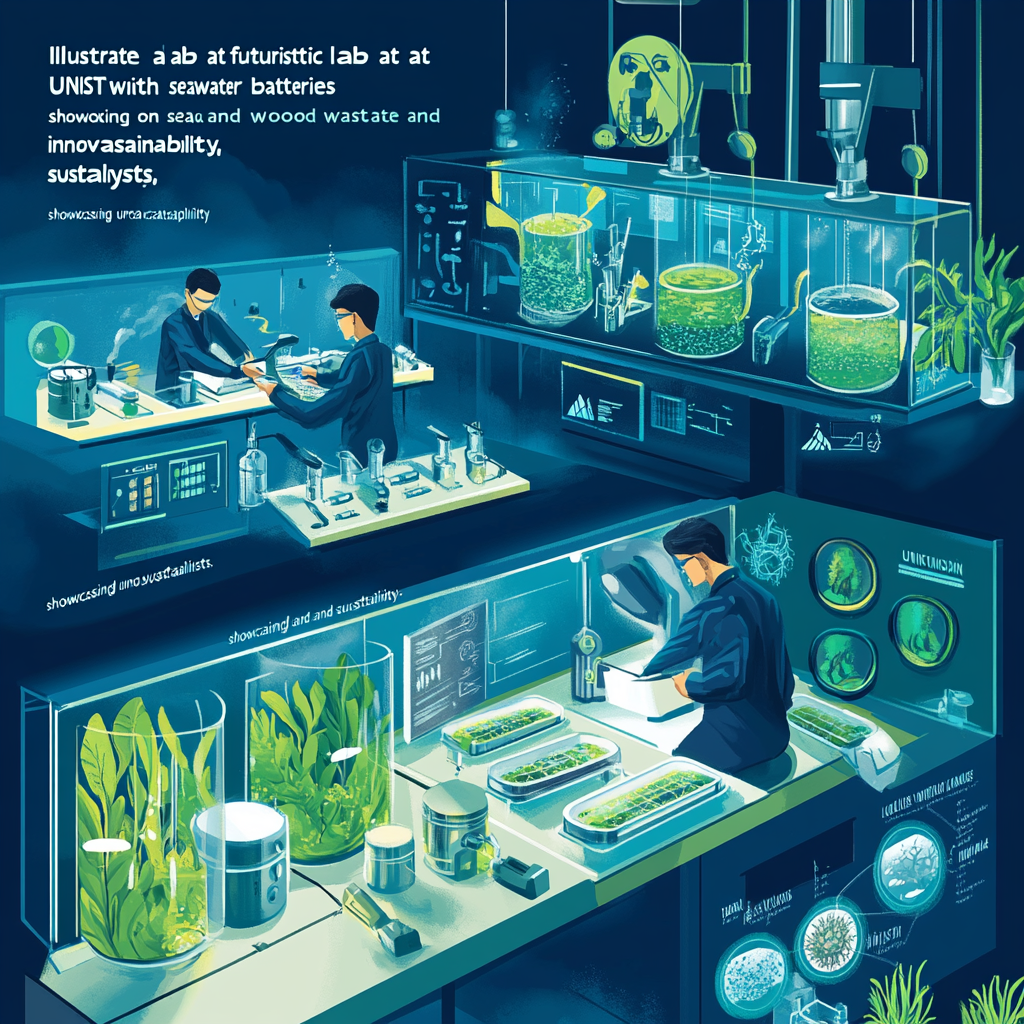
Boosting seawater battery performance with wood waste-derived catalysts
Sailing into the Future: Wood Waste as a Catalyst for Seawater Battery Innovation
Picture this: a world where our energy batteries hum with the rhythm of sustainability, where the roar of nature collides with the needle of technology. Enter the seawater battery, that wonderful contraption designed to tap into the ocean's depths and harness its vast potential. But wait! Our old friends, the challenges of efficiency, have been lurking behind the curtains, thwarting our noble quest for renewable energy with their slow kinetics and pesky overpotentials. But not anymore! Researchers from the Ulsan National Institute of Science and Technology (UNIST) have inadvertently opened Pandora's box of energy solutions by developing game-changing catalysts derived from wood waste and urea. Buckle up, because this is going to be a thrilling ride through innovation!
Let’s unravel the threads of this story, starting with the basic premise of seawater batteries. The allure of these electrochemical marvels lies in their use of seawater as a cathode material. That’s right! The very same substance that fills our oceans and sometimes drowns our beaches in plastic pollution. With this abundance comes economic promise—a goldmine just waiting to be tapped. However, like all treasures, it doesn’t come without its pitfalls. Historically, seawater batteries have dealt a tough hand, with sluggish performance and high energy costs making them less preferable than their flashy lithium-ion cousins. Feels a bit like hitting a golf ball into the rough, doesn’t it?
Now, that’s where electrocatalysts enter the spotlight to turn this narrative around. Historically, the electric orchestra played its symphony using noble metals like platinum—costly, precious, and limited in supply. But, let’s face it, finance doesn’t always dance to the idealist’s tune. This has prompted a quest to find alternatives, and guess what? Innovators like Professor Dong Woog Lee and the brainiac squad at UNIST have struck gold—no, wait, make that wood! By concocting electrochemical catalysts from wood waste (yes, the stuff we usually treat like yesterday’s news) and the unassuming substance of urea, they’ve moved the needle toward sustainability.
Now, you might be scratching your head and wondering how wood waste could possibly match the likes of platinum in performance. Well, the magic happens through a process known as nitrogen doping. Imagine heating lignin, a robust by-product of wood, to a scorching 800°C and cozying it up with urea—it’s an intense Tinder date that gives birth to a catalyst with characteristics that could make even ChatGPT blush. The nitrogen particles cleverly insert themselves into the lignin structure, enhancing its catalytic performance. It’s like adding a turbocharger to an old car: what was once sluggish now zooms down the track.
Measured against traditional platinum catalysts, this new wood-derived marvel is no slouch. In fact, it delivers performance metrics that closely rival or sometimes exceed its noble counterpart. The new catalyst achieved a maximum power density of 15.76 mW/cm², nearly kissing the saturated promise of platinum at 16.15 mW/cm². Just imagine the delight! It’s like finding the last chocolate in the box—sweet and exhilarating.
The joy doesn’t end there; let’s muse over the cost-effectiveness of these new wood waste catalysts. By trading in the flashy, sky-high costs of precious metals for affordable lignin and urea, we’re not just making strides toward better performance; we’re also setting the stage for the commercialization of seawater batteries. The implications of this breakthrough ripple outwards, creating a slew of possibilities for future energy systems. Plus, by integrating biowaste materials into the process, the environmental impact shrinks down to size. It's a perfect trifecta of cost, performance, and sustainability.
Envision a future where seawater batteries are just the tip of the iceberg. Picture these wood waste-derived catalysts swirling their way into a myriad of energy systems, perhaps even metal-air batteries! The vast potential is tantalizing. This innovation not only enhances the performance of current technologies but also holds the key to addressing pressing challenges in energy storage, paving the way toward a sustainable energy landscape.
So, let’s take a moment to breathe it in, shall we? The remarkable journey from tree to battery, from waste to wonder, is nothing short of artistry in motion. The relentless pursuit of knowledge and innovation reminds us that sometimes the solution may be lying right beneath our noses, waiting for someone to even glance at the proverbial treasure chest.
As we witness such groundbreaking advancements, it’s essential to remain vigilant, staying ahead of the curve. The merging of sustainability with technology is an ongoing dance, and to miss a step would be to lose the rhythm entirely. So if you’re as intrigued by this technological ballet as I am, why not keep enriched, keep informed, and keep thriving?
Want to stay up to date with the latest news on neural networks and automation? Subscribe to our Telegram channel: @channel_neirotoken. Join the conversation, and let’s navigate toward a brighter, greener tomorrow together.

